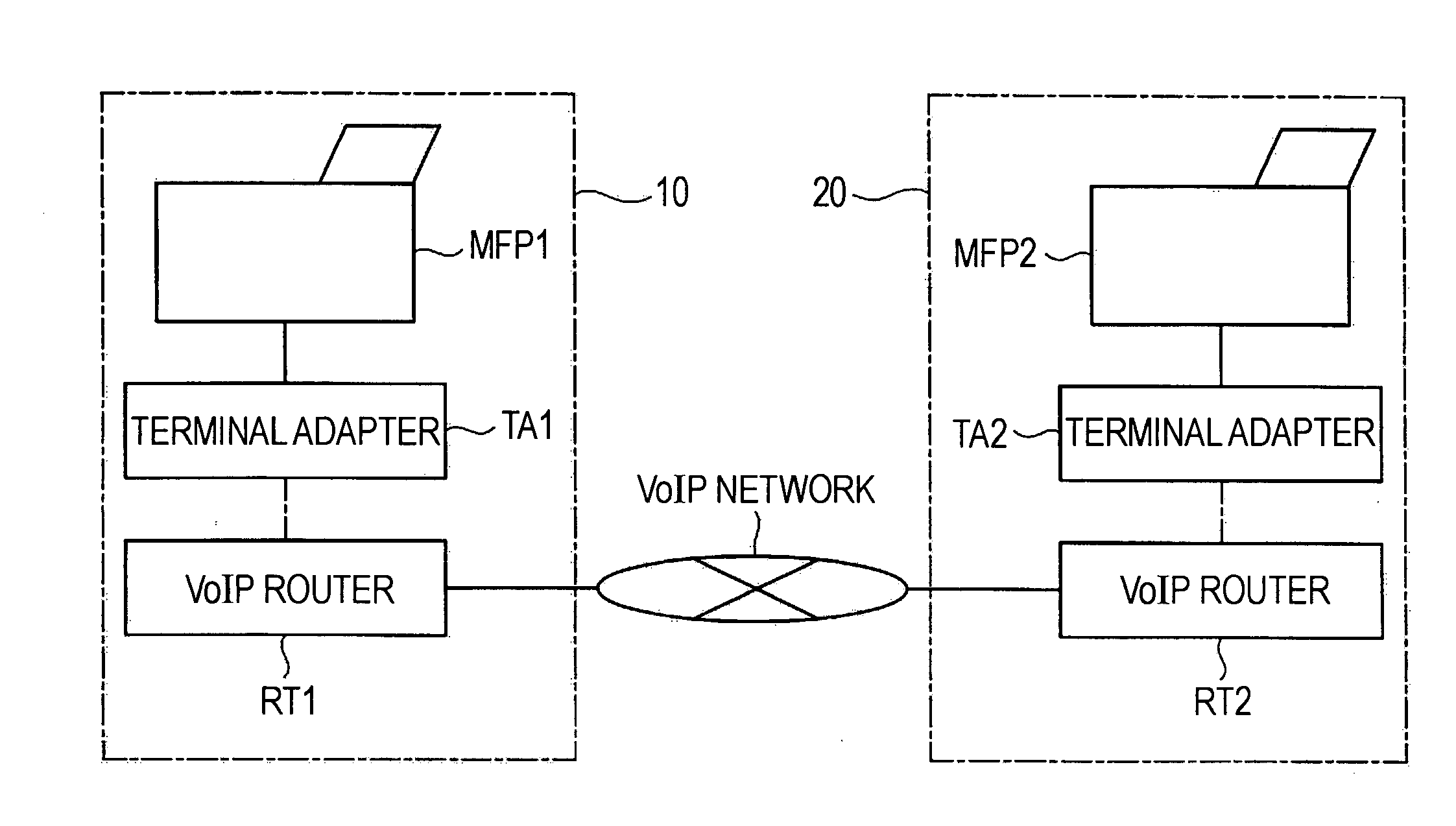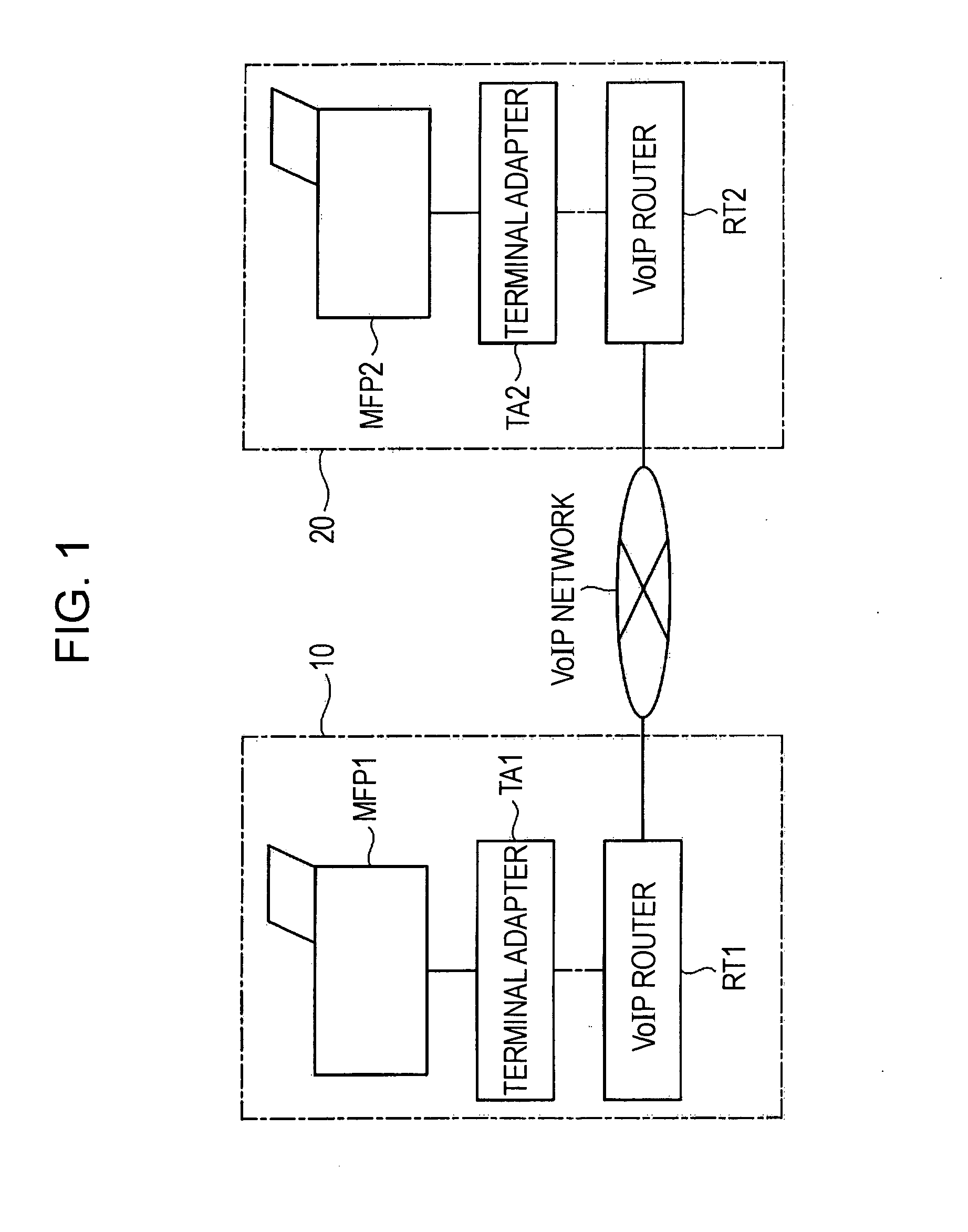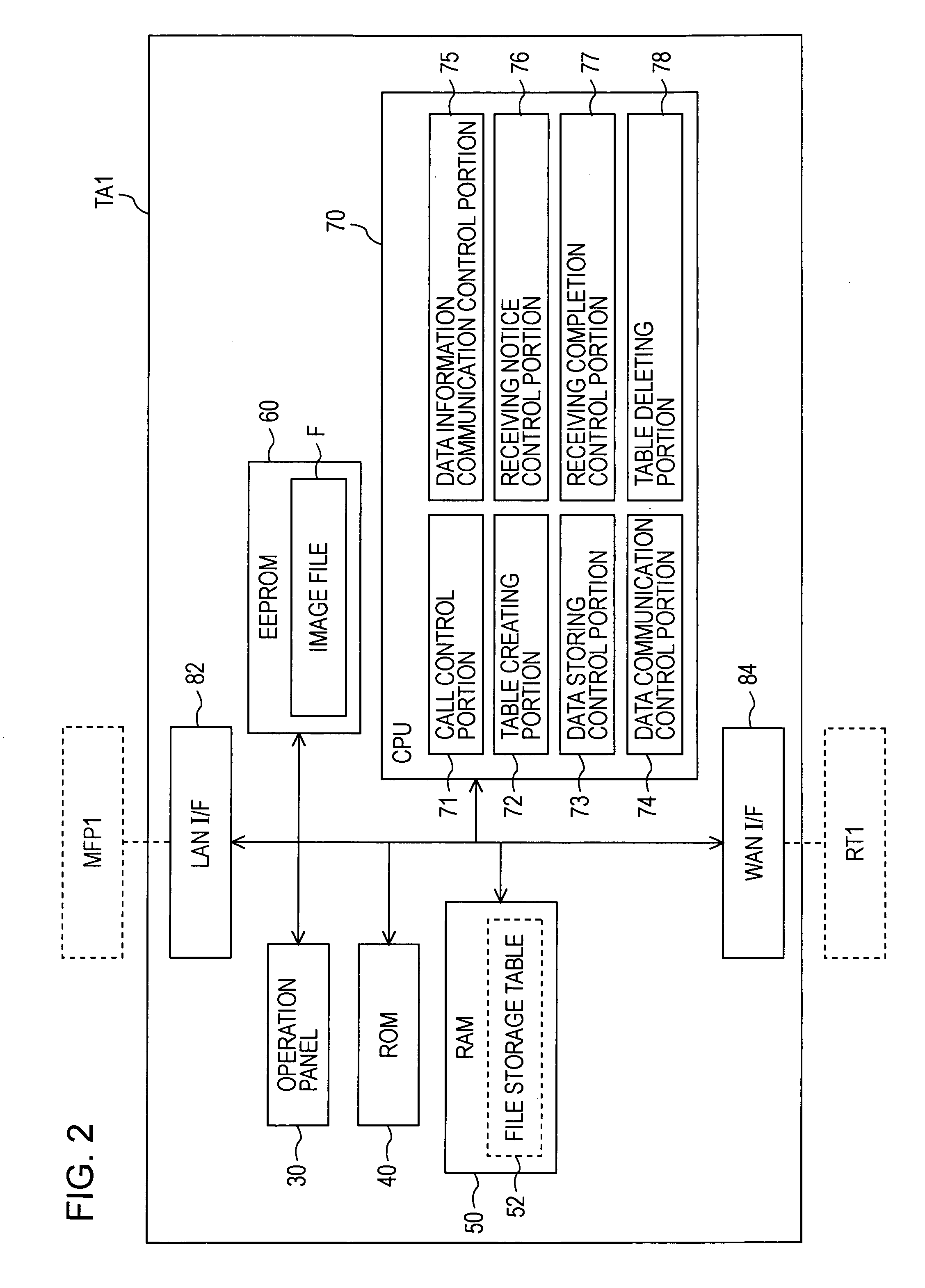Transmitting and receiving system, transmitting apparatus, and receiving apparatus
a technology of transmitting apparatus and receiving system, which is applied in the direction of data switching network, multiplex communication, digital transmission, etc., can solve the problems of missing retransmission request from the receiving side, transmitting side may not determine immediately whether, and transmitting side may not know immediately whether. to achieve the effect of easy transmission and receiving
- Summary
- Abstract
- Description
- Claims
- Application Information
AI Technical Summary
Benefits of technology
Problems solved by technology
Method used
Image
Examples
Embodiment Construction
[0036]An embodiment of the invention will be described. First, a schematic configuration of a transmitting and receiving system according to an embodiment of the invention is shown in FIG. 1. As shown in the drawing, a transmitting-side network system 10 and a receiving-side network system 20 are connected to each other through Internet INT. The transmitting-side network system 10 and the receiving-side network system 20 have functions of performing communications using a VoIP, and the Internet INT herein functions as a VoIP network. Hereinafter, the Internet INT is called a VoIP network. The VoIP network is the infrastructure which performs voice communications based on the Internet protocol, for example, an IP phone network. Through the VoIP network, communications using an RTP, which transmits a predetermined amount of data at predetermined intervals, and a UDP, which performs one-way data transmission without performing retransmission and sequence control, are performed.
[0037]Th...
PUM
 Login to View More
Login to View More Abstract
Description
Claims
Application Information
 Login to View More
Login to View More - R&D
- Intellectual Property
- Life Sciences
- Materials
- Tech Scout
- Unparalleled Data Quality
- Higher Quality Content
- 60% Fewer Hallucinations
Browse by: Latest US Patents, China's latest patents, Technical Efficacy Thesaurus, Application Domain, Technology Topic, Popular Technical Reports.
© 2025 PatSnap. All rights reserved.Legal|Privacy policy|Modern Slavery Act Transparency Statement|Sitemap|About US| Contact US: help@patsnap.com



